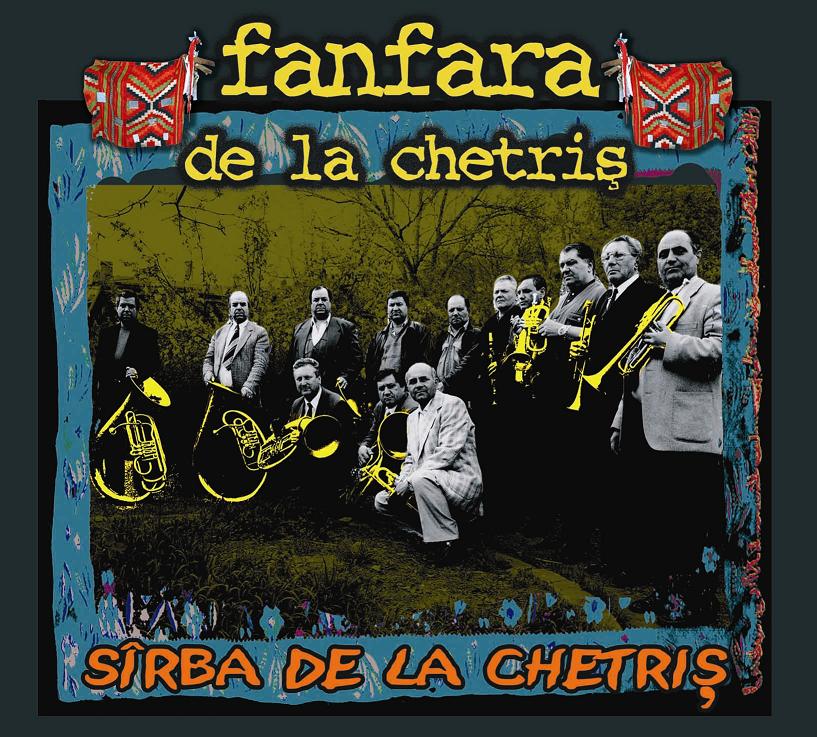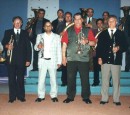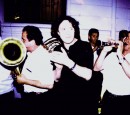Fanfara de la Chetriş
“Fanfarele ţărăneşti moldoveneşti sunt ansambluri de suflători şi percuţie care execută, într-un stil fermecător, melodii de joc, marşuri, cântece, cântări de nuntă şi piese din repertoriul ritual de Anul Nou pentru petrecerile sătenilor. Fanfarele rurale se ivesc cu vreun secol în urmă, în prelungirea fanfarelor militare şi a tarafurilor din regiune. Mult timp, le ştiu şi le iubesc doar localnicii. Apoi, în vremea festivalurilor eterne (anii ‘60-’80), satele îşi alcătuiesc, prin reunirea micilor fanfare de nuntă locale, fanfare reprezentative, care încep să evolueze pe scenele urbane, înfruntându-se totodată pentru supremaţie….
Satul Pietriş, alcătuit în bună parte din rromi, e bogat în fanfare de nuntă. Aici, mai toţi bărbaţii sunt lăutari de înaltă clasă. Fanfara de pe acest disc e compusă din membrii a trei familii. Instrumentiştii, dotaţi şi ambiţioşi, mânuiesc cu deosebită virtuozitate clarinetul, trompeta, eufoniul, baritonul, basul.”
Speranţa Rădulescu – Muzeul Ţăranului Român
“The Moldavian village brass bands are groups of wind and percussion instruments interpreting dance tunes, marches, wedding party songs and pieces from the ritual repertoire typical for the village parties at New Year’s time in a matchless delightful style. The village brass bands started about a century ago, as an extension of military bands and local folk bands. For a long time only the peasants knew and loved them. Around the forties and fifties they come “into power”. Then, at the time of the ‘eternal festivals’ (in the sixties, seventies and eighties) and by bringing together the local wedding party bands, the villagers set up ‘representative brass bands’ which start playing in city theatres, competing for supremacy…
The Pietris village, many of whose inhabitants are gypsies, is rich in wedding brass bands. Here most of the men are high class musicians. The band on this disc is made up of the members of three families. Gifted and ambitious, they are all virtuosos of the clarinet, trumpet, baritone and bass.”
Speranţa Rădulescu – Muzeul Ţăranului Român (Trad. Cornelia Bucur)
ALBUME:
-
The Last Fanfare - CD / MC
(2012)

-
Sârba de la Chetriş - CD
(2012)





